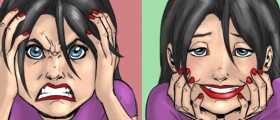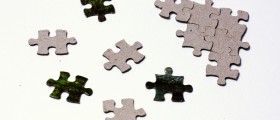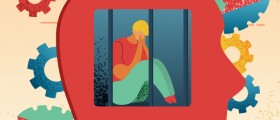
As far as real personality disorders are concerned, they are classified according to the Axis II of the Diagnostic and Statistical Manual of Mental Disorders or DSM-IV-TR of the American Psychiatric Association. Additionally, the diagnosis process for any personality disorder needs to be in concordance with the International Statistical Classification of Diseases and Related Health Problems, issued by the World Health Association as well.
What Causes a Personality Disorder?
According to a study which was carried out, encompassing 600 people who were, on average, 30 years old, a history of childhood abuse was the main trigger of personality disorders. The abuse may have been physical, verbal, emotional or sexual in nature. Neglect during childhood is a strong trigger of personality disorders too.
Therefore, childhood abuse, in its many forms is the main trigger of personality disorders which either take place at a young age, which is a less likely occurrence, or appear during adulthood, due to the previously experienced traumas.
In fact, sexually abused individuals are likely to show patterns of psychopathology, while physically abused ones have increased chances of developing an antisocial or impulsive disorders later on. On the other hand, neglected children usually manage to recover over their course of adulthood.
History
It is very important to know that whatever is considered to be a personality disorder today needs to be related to the field of modern psychiatry. The historical perception of mental disorders needs to be taken into consideration during this process, even though the classifications have changed significantly over time. This is so mainly due to the fact that some personality disorders which are present today have been noted even as early as in ancient times.
Different Types of Personality Disorders
In order for a person to be diagnosed with a personality disorder, he/she needs to fall under certain defined criteria, noted in the ICD-10. Basically, this person needs to show evidently different behavior from the one which is required by the society and the culture he/she is a part of. This form of deviation needs to encompass at least two of the following: cognition, affection, control over impulses and gratification of needs, relationships with others and dealing with interpersonal situations.
Furthermore, this deviation needs to take place without control or flexibility, appearing in a great number of situations rather than being limited to only a set of specific ones.
Also, the roots of the disorder need to be located in the childhood, or in a distant past, lasting for a long time and not falling under organic disorders such as brain diseases and injuries.
Therefore, a person may be suffering from a paranoid personality disorder if he/she feels wary of others, constantly thinking that they may be plotting against him/her, therefore not trusting a single person, often hiding from others.
On the other hand, schizoid people are not interested in meeting other people and getting into relationships due to the lack of freedom such life imposes. Thus, these individuals are introvert loners who are often not interested in sexual intercourse or affectionate relationships.
Schitzotypal personality disorder, being yet another subclass, depicts people who cannot make close relationships, often being labeled as eccentrics. These people tend to believe that they are completely different from the rest, being capable of reading minds of others or possessing extraordinary powers. Naturally, when faced with other people, schitzotypal individuals may feel exposed, anxious and frustrated.
As for the borderline personality disorder, it manifests through a vague perception of oneself. Moreover, other people may label this kind of person as inconstant, prone to mood swings and outbursts of strong, usually violent, emotions. Hearing voices which do not exist is a common trait of these people too.
Histrionic personality disorder depicts a person who needs to be in the center of attention, always wanting to entertain others, craving for their approval. These people may use flirting and many other forms of attention drawing, only to ensure their position on the attention throne. Due to these facts, histrionic individuals may be labeled as dramatic, impulsive, reckless or excessively emotional.
Narcissists are quite a notorious category of people with personality disorders, lacking self-confidence and making up for this through excessive self-love and admiration, forcing others to confirm their specialness so as not to become lost, irritated or upset.
Criminals and other adult offenders are usually suffering from antisocial personality disorder, being prone to drinking or indulging in other forms of addiction, acting on impulses, even though this hurts the people close to them. These people often put themselves before others, being selfish and cold.
Avoidant personality disorder describes people who fear being criticized and judged, thus staying away from others regarding relationships, intimacy and friendships, even though this leads to loneliness, sadness and longing for everything they avoid.
On the other hand, people suffering from a dependent personality disorder need other people to be there for them, being incapable of taking action or making decisions on their own.
Ultimately, OCD, or obsessive compulsive disorder is a personality disorder which manifests through one's need to have order and capability of controlling everything, due to his/her excessive feelings of responsibility.
All in all, there are many different personality disorder categories. These have changed during the times and may vary from one culture or society to another. Nevertheless, they usually describe people with behavioral patterns which do not coincide with the set norms of the society they manifest in.

















Your thoughts on this
Loading...